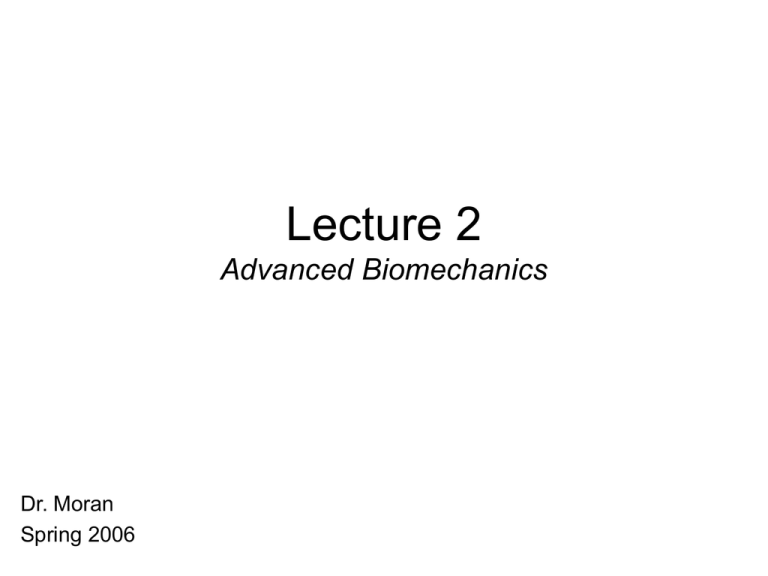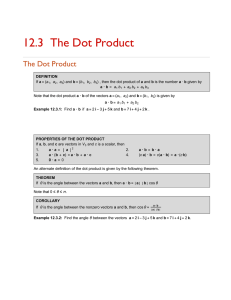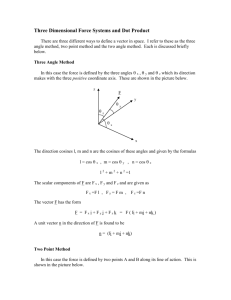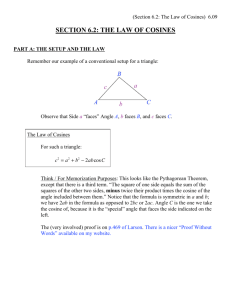Lecture 2 Advanced Biomechanics
advertisement

Lecture 2 Advanced Biomechanics Dr. Moran Spring 2006 Lecture Outline • Introduction to MS Excel • Example Worksheets » Sine Wave Function » Golf Ball Example » Joint Angle Determination • Finite Difference Calculus • Central Difference • Forward/Backward Difference • Computing 2D Joint Angles • Law of Cosines • Dot Product • Collect 2D Kinematic Data • Explain Assignment #2 Finite Difference Calculus • The derivative is nothing more than the SLOPE at a given point. All numerical approaches can be thought of as a way of determining that slope • Central Difference Method: in order to compute the derivative (slope) for a given frame i, you will need information from the frame before and the frame after • Do not require information from the frame i • This method does NOT work for frames at the beginning and at the end of a data set. Why? Finite Difference Calculus (con’t) • Forward Difference: good for the first frame of data vi = (si+1 – si) / (∆t) Work out formula for ai in terms of s • Backward Difference: good for the last frame of data vn = (sn – sn-1) / (∆t) Work out formula for an in terms of s • Noise in the signal will greatly affect the numerical computation of derivatives! Filtering data is incredibly important to avoid erroneous computations. Future Lecture on Signal Processing/Filtering Law of Cosines c A2 = B2 + C2 – 2BC cos (a) B Therefore, cos (a) = (B2 + C2 – A2) / (2BC) a = acos ( (B2 + C2 – A2) / (2BC) ) A a Where a = knee flexion angle C b Dot Product • The dot product can be defined for two vectors X and Y by the following: X ∙ Y = |X| |Y| cos Θ Where: Θ is the angle between the vectors |X| is the norm (length of vector) If X ∙ Y = 0, then X is orthogonal with Y X Θ Y Remember that to construct the vector subtract coordinates of the starting point from the end point! Some Definitions • Norm: can be thought of as the magnitude or length of a vector X = (a1, a2) IXI = [ (a1)2 + (a2) 2 ] 0.5 • Ex. Given X = (-2, 6), what is IXI? • Dot Product X ∙ Y = (a1b1) + (a2b2) Ex. Given X = (-3,1) and Y = (2,9), what X ∙ Y? Computing Joint Angles • Ex: Compute the relative knee flexion angle? Use both the Law of Cosines and the Dot Product. HIP (-6.1, 92.4) KNEE (-3.8, 50.2) ANKLE (-8.6, 13.7) 2D Planar Kinematics Consideration of Anatomical Planes When deciding on a particular movement for 2D kinematic analysis, first determine the primary anatomical plane of action. Be sure to place the camera perpendicular to that plane Ex: Running – the knee flexion angle predominately occurs in the sagittal plane http://training.seer.cancer.gov/module_anatomy/images/illu_body_planes.jpg http://www.footmaxx.com/clinicians/pics/planefoot.gif











